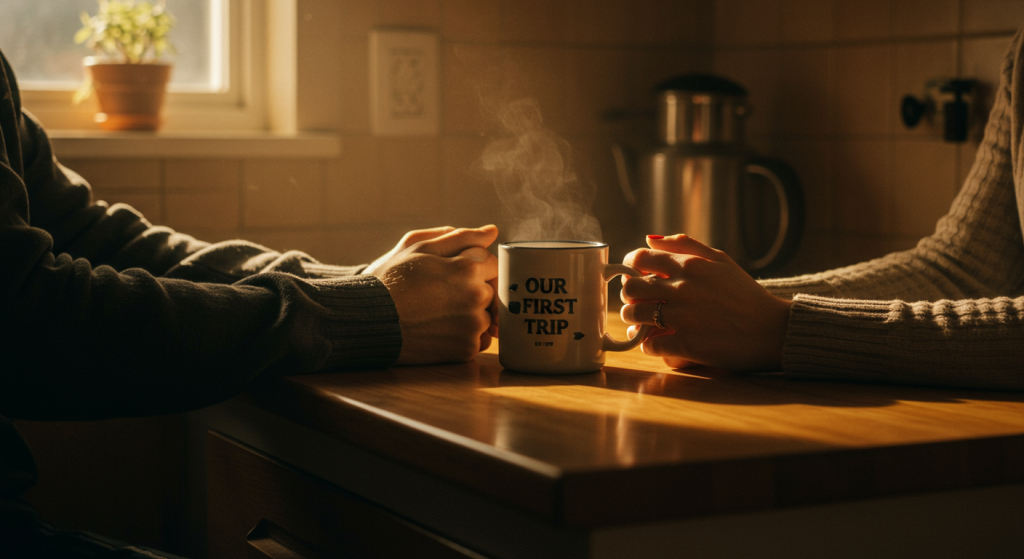Anchor Objects: Little Things that Trigger Big Love

A coffee mug from your first trip. The playlist from your wedding week. The keychain your spouse bought when money was tight. Small objects can carry big emotions. In this post, you’ll learn how to place “anchor objects” in your daily path to trigger warmth on autopilot—on the fridge, by the toothbrush, next to the remote—so your environment cues connection even when your energy is low.
Why Anchor Objects Matter More Than You Think
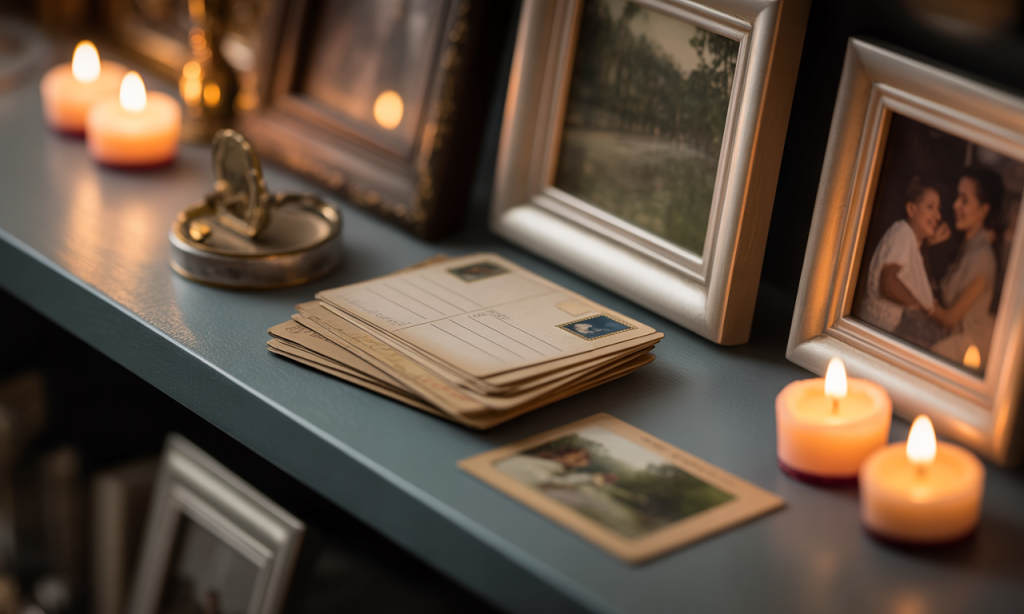 Marriage doesn’t just live in words—it lives in the atmosphere of your shared space. The environment you move through each day sends constant signals to your nervous system. Whether it’s clutter or calm, tension or tenderness, your surroundings whisper messages your body believes long before your mind notices.
Marriage doesn’t just live in words—it lives in the atmosphere of your shared space. The environment you move through each day sends constant signals to your nervous system. Whether it’s clutter or calm, tension or tenderness, your surroundings whisper messages your body believes long before your mind notices.
That’s where anchor objects come in. These are small, meaningful items that cue emotional safety and love on sight. They don’t demand conversation or effort; they simply remind you that your story is bigger than today’s mood.
An anchor object is anything that bridges past warmth to present presence. It could be:
- The concert ticket from your first date.
- A handwritten “I’m proud of you” note taped inside the cabinet.
- The blanket from your first apartment.
- A silly magnet from a road trip that went hilariously wrong.
They seem small, but they carry an invisible weight—each one whispers, “We’ve been good before. We can be good again.”
If you’ve read When Hope Feels Impossible: Why Future-Visualization Backfires (and What Works Instead), you already know why this works: the nervous system trusts evidence more than imagination. Anchor objects make connection tangible.
The Science of Environmental Cues
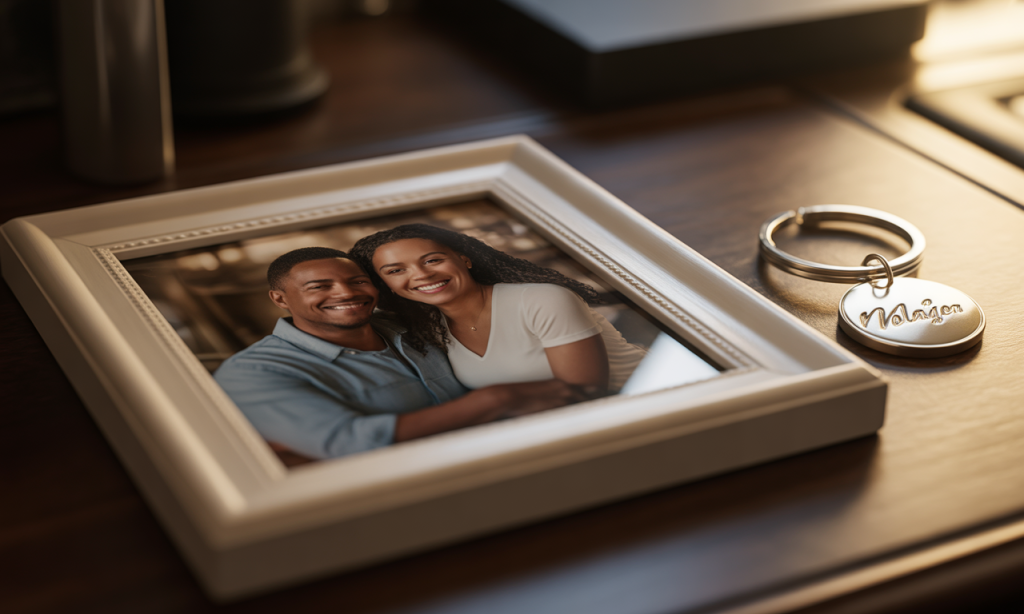 You’ve probably noticed how a scent, sound, or sight can instantly change your mood. That’s because your brain links sensory cues with emotional states. The smell of your spouse’s cologne, the rhythm of your wedding song, or the chipped mug you’ve both reached for a thousand times—all these act as shortcuts to safety.
You’ve probably noticed how a scent, sound, or sight can instantly change your mood. That’s because your brain links sensory cues with emotional states. The smell of your spouse’s cologne, the rhythm of your wedding song, or the chipped mug you’ve both reached for a thousand times—all these act as shortcuts to safety.
When life gets chaotic, we forget that environmental design is emotional design. The visual and tactile landscape of your home can either trigger stress or reset connection.
That’s why anchor objects that trigger love work: they activate familiarity, belonging, and calm in milliseconds. No words needed.
In cognitive psychology, this is called priming—your brain preloads an emotional response based on context. Anchor objects create micro-primes for love throughout your day.
To design these primes intentionally, start with your memory inventory from The Memory Bank: Saving Good Moments for the Days You Forget. You’ll find dozens of emotional “receipts” worth turning into visible anchors.
How to Choose Anchor Objects That Actually Work
 Not every keepsake qualifies as an anchor. Some items remind you of stress, others fade into background clutter. The key is to pick emotional signals, not just sentimental stuff.
Not every keepsake qualifies as an anchor. Some items remind you of stress, others fade into background clutter. The key is to pick emotional signals, not just sentimental stuff.
Here’s a quick filter:
- Choose what stirs warmth, not guilt.
If an object brings pressure (“We used to travel more”) instead of peace, skip it. The goal is reassurance, not nostalgia fatigue. - Pick physical triggers over digital ones.
A visible mug beats a hidden photo file. Tangibility anchors emotion faster. - Go for ordinary items with extraordinary stories.
Think toothbrush cup, oven mitt, keychain—things you already touch. - Involve both partners.
Have each of you pick three items. You’ll learn what memories make the other person feel grounded and loved. - Rotate seasonally.
Just like playlists, anchors can get stale. Swap them every few months to refresh their emotional power.
If you’re not sure where to start, revisit your Photo Rituals That Heal gallery. You likely already have images that translate beautifully into physical anchors—prints, magnets, or mini frames.
The Best Places to Put Anchor Objects
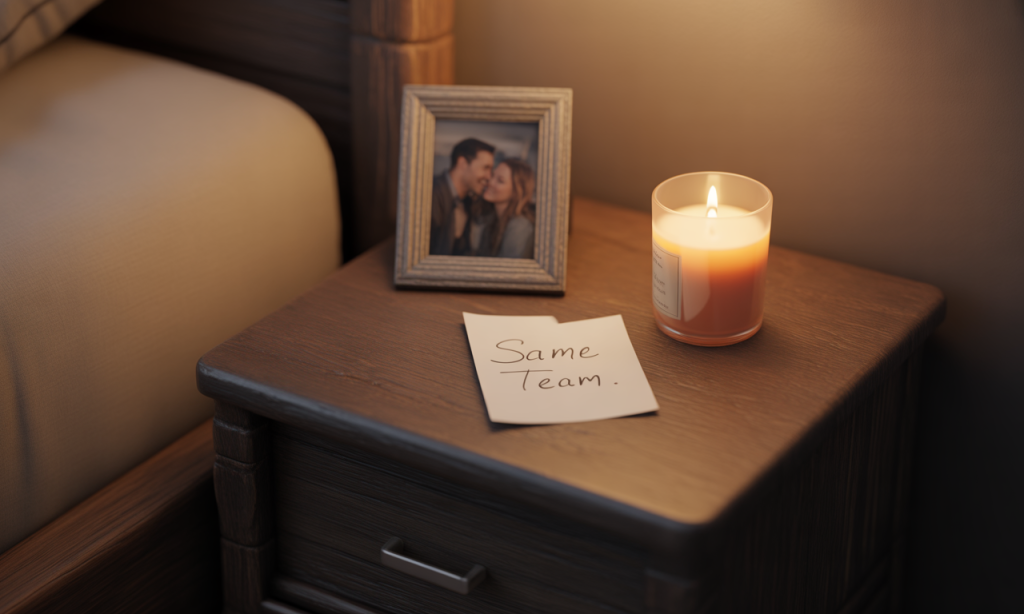 Anchor objects work best when placed in habit loops—the small daily patterns that already exist. This way, your environment does the reminding for you.
Anchor objects work best when placed in habit loops—the small daily patterns that already exist. This way, your environment does the reminding for you.
Here are prime spots:
- The Fridge
Attach a printed photo or magnet that captures laughter, not perfection. The kitchen is a high-traffic emotional zone—anchor it in lightness. - The Bathroom Mirror
Tape a quote, verse, or sticky note that says something true and kind. Morning fog on the mirror becomes a cue for grace. - Beside the Toothbrush
A small charm, travel stone, or trinket that reminds you of resilience. You see it twice a day—make those glances count. - Next to the Remote
A small photo of your first home or your kids asleep—anything that reminds you what’s worth watching over. - The Bedside Table
A memento that evokes calm: maybe the same candle scent you used on your honeymoon or the journal where you wrote your vows.
For more ways to integrate love into your space, pair this with Design Your Marriage Rhythms: The Rituals & Resets Handbook. It helps couples create intentional patterns that keep warmth consistent.
The Daily Power of Micro-Moments
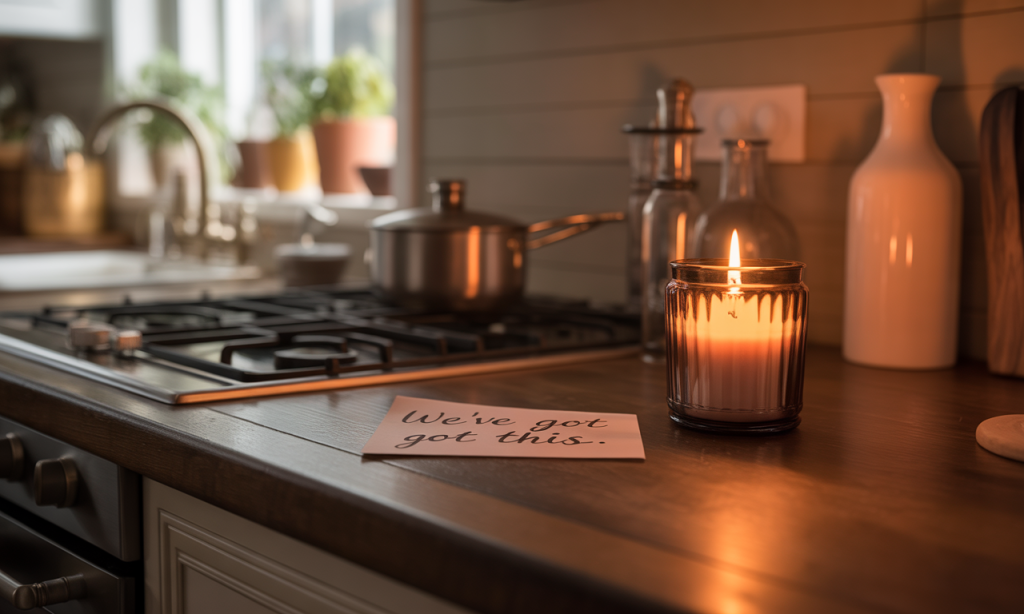 You might wonder—can small cues really shift the mood of an entire relationship? Yes. Because love lives in micro-moments.
You might wonder—can small cues really shift the mood of an entire relationship? Yes. Because love lives in micro-moments.
John Gottman’s research calls them “bids for connection”—tiny attempts to turn toward each other. Anchor objects act as silent bids. They nudge your nervous system toward tenderness dozens of times a day, often without words.
Here’s what that might look like:
- You reach for the fridge handle, see the concert ticket, and smile before speaking.
- You set down your phone next to the “Same Team” coaster and pause before replying in frustration.
- You light the candle that smells like your first apartment, and a memory of early laughter replaces today’s tension.
These cues don’t fix deep issues, but they slow the erosion of warmth that happens in busy seasons.
To deepen these effects, you can combine anchor objects with The Five-Minute Rewind: A Micro-Practice for Hard Days. Together, they form a pattern: the anchor restores emotional safety, and the Rewind turns it into action.
Case Study: The Keychain That Changed the Mood
 Melissa and Andre used to fight every Sunday night. The routine was predictable—bills, chores, exhaustion. They tried pep talks, but the tension kept sneaking back.
Melissa and Andre used to fight every Sunday night. The routine was predictable—bills, chores, exhaustion. They tried pep talks, but the tension kept sneaking back.
During one of our marriage workshops, Melissa mentioned a little metal keychain Andre had bought her during their leanest year. “It’s not pretty,” she said, “but it meant everything—he skipped lunch for a week to get it.”
We asked them to put that keychain in a visible spot—hung on a hook by the front door.
Two weeks later, Melissa laughed during check-in: “I touch it every morning. It reminds me we’ve survived worse.” Andre added, “It’s stupid, but I notice she smiles before we even leave the house now.”
That’s the quiet strength of anchor objects that trigger love—they bypass words and bring back the body’s memory of safety.
If you want to turn your home into a collection of cues like that, our Build Momentum in Marriage: Small Metrics That Keep Love Moving post shows how to measure and celebrate those subtle wins.
Avoiding the Clutter Trap
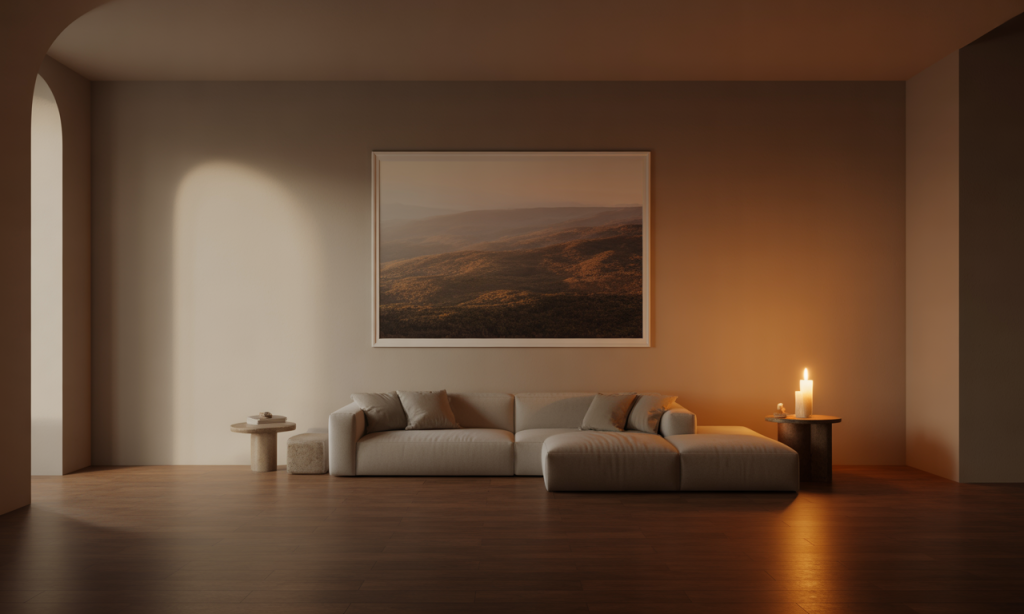 A word of caution: anchor objects are not souvenirs for nostalgia hoarders. Too many cues dull their effect.
A word of caution: anchor objects are not souvenirs for nostalgia hoarders. Too many cues dull their effect.
Use the “three-second test.” When you look at an item, if it doesn’t spark a feeling of warmth or gratitude within three seconds, it’s probably clutter, not an anchor.
Rotate objects occasionally to keep your environment emotionally fresh. A note or token can lose its charge after months in the same spot. Switching placements reawakens meaning.
Also, avoid anchors that only one partner values—choose together to ensure mutual connection.
You’ll find that the best anchors tend to have shared emotional ownership—like your first apartment’s mug, not just your favorite coffee cup.
Creating Anchor Objects from Scratch
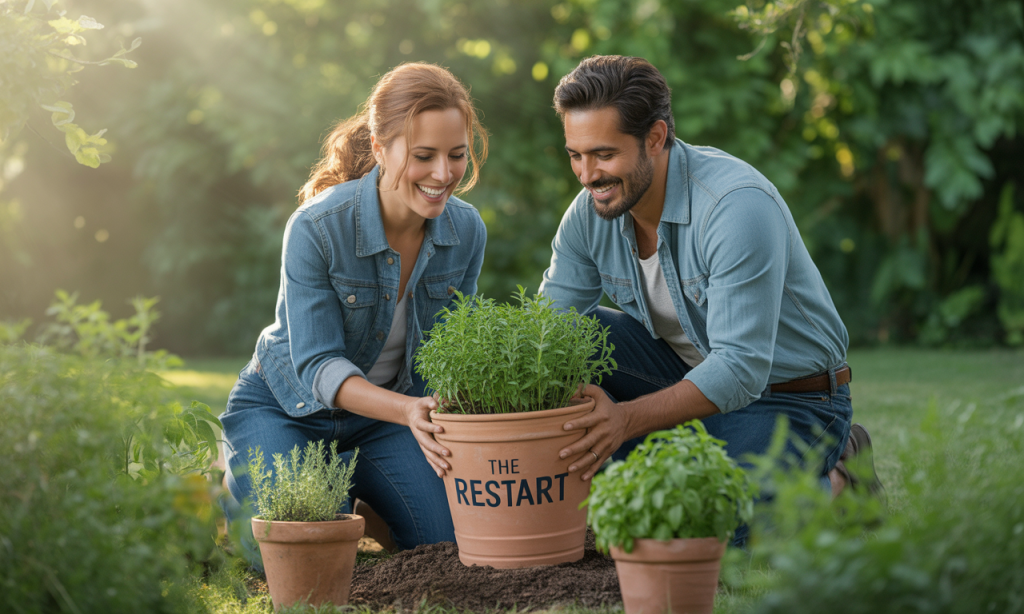 If your home feels memory-light right now, you can create new anchors easily. It’s not about buying; it’s about imbuing meaning.
If your home feels memory-light right now, you can create new anchors easily. It’s not about buying; it’s about imbuing meaning.
Try these ideas:
- Write each other one-sentence notes of gratitude and fold them into a jar.
- Pick a new “us” mug or plate you’ll always use together.
- Create a short playlist called “Ordinary Grace” with songs that calm you both.
- Frame a quote or verse that captures your shared resilience.
- Plant a small herb pot together and call it “The Restart.”
When you use an item repeatedly with shared emotion—laughter, calm, prayer—it becomes encoded as an anchor.
If you want to connect this with faith, read Faithful Remembering: Spiritual Practices to Recall God’s Goodness in Marriage for simple rituals that tie gratitude to daily objects.
When Anchor Objects Lose Their Power
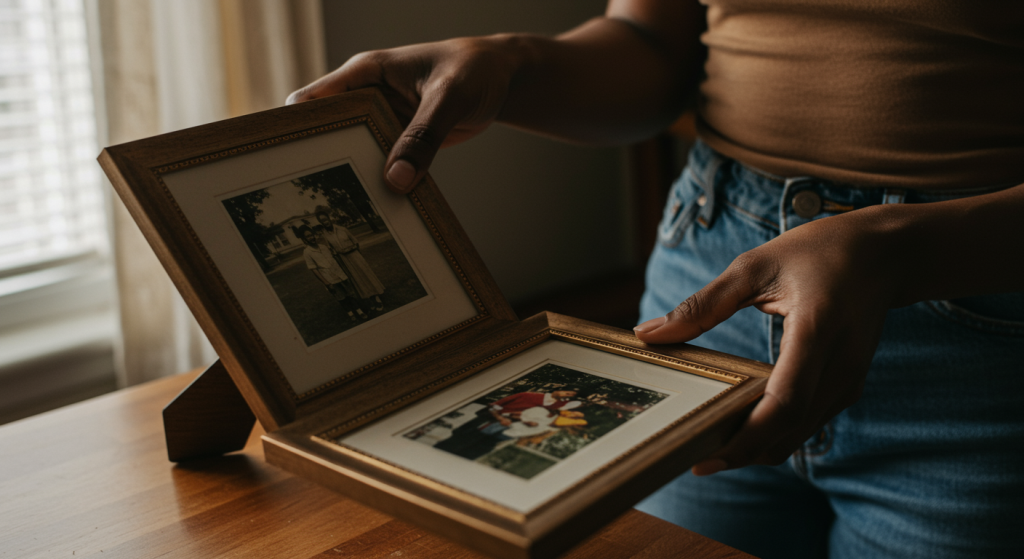 If an anchor stops evoking warmth—or starts carrying tension—retire it. Maybe the framed photo now reminds you of a hard season, or a song feels bittersweet. That’s okay.
If an anchor stops evoking warmth—or starts carrying tension—retire it. Maybe the framed photo now reminds you of a hard season, or a song feels bittersweet. That’s okay.
Healing means updating your emotional cues to match your current growth. Replace the object or reinterpret it:
- Write a small “chapter two” note and tape it behind the photo.
- Burn a candle while letting go of the old memory it carried.
- Reframe it in prayer: “God, thank You for what this season taught us.”
The goal isn’t to preserve your past; it’s to let it serve your present.
This mindset pairs beautifully with When You Can’t See a Way Forward: How Looking Back Rebuilds Hope, which teaches how to retrieve encouragement without getting stuck in nostalgia.
A 7-Day Anchor Object Challenge
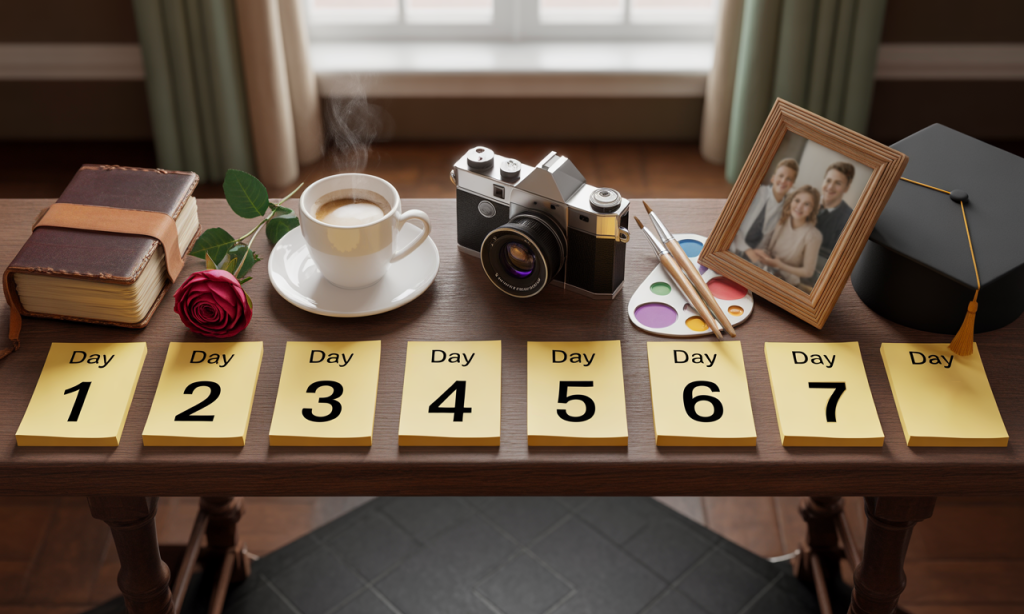 Want to see change fast? Try this week-long reset.
Want to see change fast? Try this week-long reset.
Day 1: Choose one spot you see every morning. Add a small anchor—a quote, photo, or keepsake.
Day 2: Identify one anchor for laughter (something funny or light).
Day 3: Add a faith anchor—a verse, cross, or gratitude note.
Day 4: Create one “shared task” anchor, like a specific mug you both use.
Day 5: Rotate an old anchor to a new place.
Day 6: Notice which cues make you smile first and name why.
Day 7: Share one story each about an anchor that still moves you.
By the end of the week, your home will quietly start doing the work of connection for you.
To track the small wins from this challenge, use the micro-metrics guide from Build Momentum in Marriage to visualize progress.
Faith Layer: Let Your Surroundings Preach Grace
 For faith-driven couples, anchor objects can serve as silent prayers. The cross on the wall, the verse card by the sink, or even the dented pan from years of hospitality—all testify to God’s constancy.
For faith-driven couples, anchor objects can serve as silent prayers. The cross on the wall, the verse card by the sink, or even the dented pan from years of hospitality—all testify to God’s constancy.
Turn these into micro-worship moments:
- Touch the anchor and whisper thanks.
- Use it to prompt a one-line prayer: “Help us love like this again.”
- Let it remind you of God’s past provision when fear creeps in.
Every glance becomes a quiet invitation back to grace.
For deeper ideas, the post Faithful Remembering offers examples of pairing prayer with physical reminders.
Bringing It Home: Make Love the Default Setting
 Connection doesn’t depend on grand gestures—it depends on what you surround yourselves with. Anchor objects transform your home into a living memory of love’s persistence.
Connection doesn’t depend on grand gestures—it depends on what you surround yourselves with. Anchor objects transform your home into a living memory of love’s persistence.
So start small: one photo by the fridge, one note on the mirror, one mug that says “us.” When your environment cues connection, love stops being something you chase and starts being something that meets you on the way to the coffee pot.
And when you’re ready to expand from visual anchors to rhythm-based habits, read Design Your Marriage Rhythms. Together, they form a system where connection is not left to chance—it’s designed right into your daily life.

